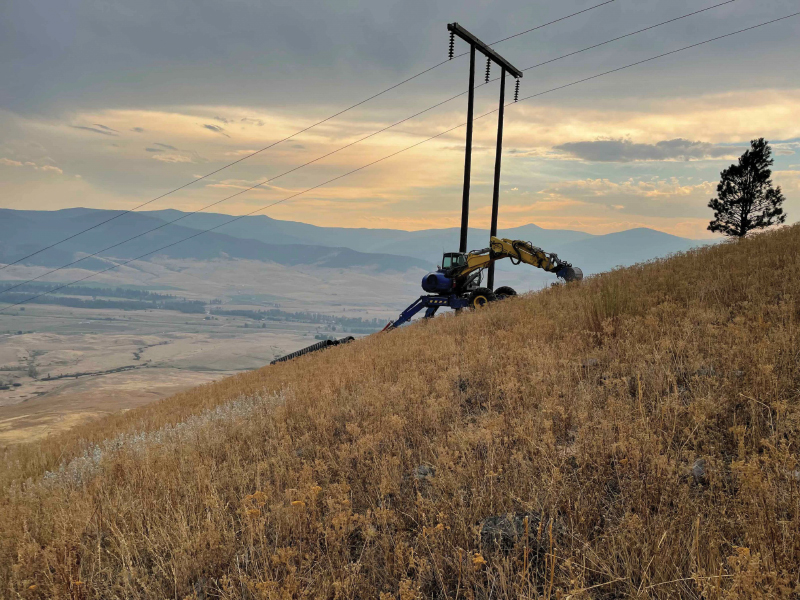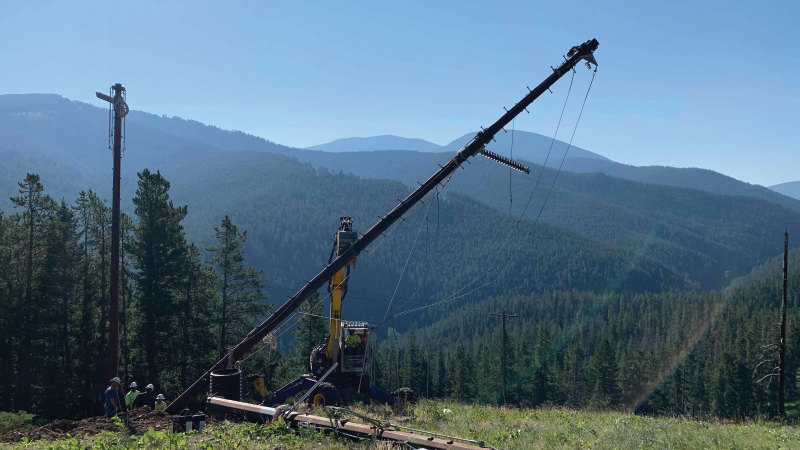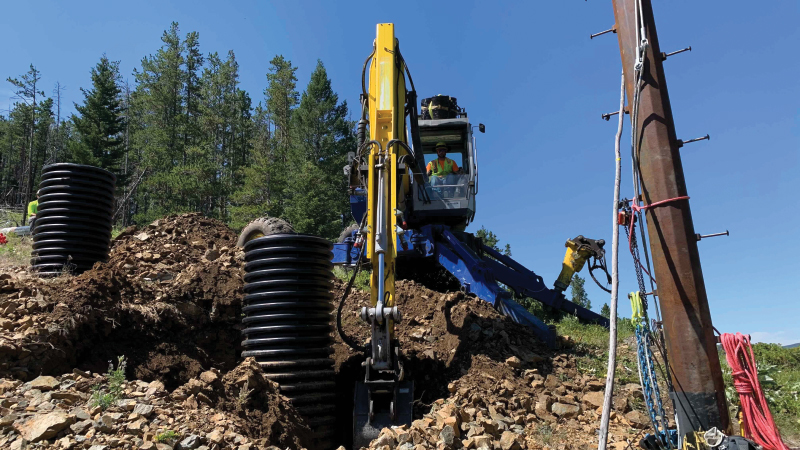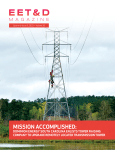Electricity is critical in today’s societies — at home and globally. Not only does it keep the lights on, but it is also central to enhancing productivity, health and security, travel and economic growth. And with the total U.S. electricity consumption in 2022 at its highest-ever recorded usage at 4.05 trillion kWh, there’s no sign of demand slowing down. As highlighted in the 2022 Global Energy Perspective study by McKinsey, power consumption is projected to triple by the year 2050 as electrification and living standards continue to grow and evolve.
With our increasing reliance on the energy source, a secure electricity supply and resilient power infrastructure are more important than ever. That means updating the current aging infrastructure, as well as expanding transmission systems to include clean energy projects. According to the U.S. Office of Electricity, more than 70% of the nation’s grid transmission lines and power transformers are more than 25 years old, increasing vulnerability and potential failure — especially during extreme weather events. Additionally, to meet the goal of 100% clean electricity by 2035 and a zero-emission economy by 2050, as outlined in the Bipartisan Infrastructure Bill, more renewable energy sources and infrastructure will need to be built.
To ensure connectivity across rural and urban communities, transmission lines are often located in hard-to-access remote environments. And when it comes to renewable energy sources, infrastructure needs to be built far from urban centers to efficiently generate electricity. Like all construction projects, working in remote environments is not without risk or for the unprepared. But the unique challenges these locations bring often call for an even more expansive — and often customizable — checklist to ensure success.
Get familiar with the location
Before starting any construction project, it’s crucial to complete a thorough site investigation to understand the intricacies of the location. In remote sites and environmentally sensitive areas, drones are an invaluable tool for getting a safe, detailed and non-disruptive look at the site and its surroundings. With drone technology and geospatial data, engineers can remotely pinpoint the exact locations where work will occur and develop a design to fit within the environment before crews ever step foot on site.
In addition to a site review, it is also important to fully understand the environment being worked in and around. In historical or archaeological sites, on tribal lands, or in forest service-protected areas such as wetlands, additional environmental restrictions will often be in place, and additional measures must be followed. Depending on the location, permits from local governments and other relevant agencies may also be required. For example, environmental permits are often necessary when work has the potential to disrupt the environment. Permits outline conditions an organization must follow to work in a specified environment. All necessary permits need to be acquired prior to work beginning. To help aid in overall success, establish a collaborative partnership with all relevant parties at project onset. This could include federal agencies, state and local governments, tribal nations, environmental organizations, as well as your industry partners, key stakeholders and local communities. Then, set a plan to ensure regular engagement and communication with partners throughout the project.
Knowing the various terrain crews will be working in and traveling across is another crucial component for strategic design and project planning. Depending on site terrain, specialized equipment, additional crew training and increased safety measures may be necessary. Placing energy infrastructure on steep slopes, for example, will likely call for equipment such as walking excavators, that can effectively and safely traverse and operate along the site. Other considerations may include restricted work hours, ground disturbance restrictions or any additional risks to mitigate, such as fire danger.
Being fully equipped with the information and partnering with industry and area experts will help reduce unexpected work delays while implementing proper solutions. It will also support crew confidence, limit environmental impact and preserve the longevity of the area's ecosystem.
Eliminate unnecessary disruptions
When working in remote areas, access roads are often built to easily haul equipment, materials and people to and from the site. With that, however, comes increased project duration, land disruption and annual maintenance needs of the access road. While that once was the most effective way of accessing remote construction sites, with innovative new solutions and technologies, that’s no longer the case.
Today, all-terrain or utility vehicles can provide crew transport and material hauling across rugged terrain and into narrow, hard-to-access locations; helicopters are becoming more common for bringing large-scale equipment or materials, such as power poles into remote areas, and walking excavators can access and operate in difficult locations and on various terrain — including on slopes up to 50 degrees, on rocks and in mud, snow and water up to five feet deep. These innovative excavators have become an ideal solution for increasing safety and efficiency in power pole excavation and installation, right-of-way clearing, steep slope excavation and rockfall protection, especially in environmentally sensitive areas and where limited disruption is imperative. For example, the use of a walking excavator helped one utility company meet environmental compliance, while also saving 13 months on their projected scope of work.
In addition to limiting ground disturbance, consider refueling containment and incorporating sustainable construction methods. Meticulous refueling practices over catch-pans can prevent spills or leaks while using biodegradable materials will help further minimize the overall environmental impact. And whether building new power infrastructure or providing powerline reconstruction, consider using materials — such as metal — that enhance infrastructure resiliency and durability, mitigate the risk of damage and improve the overall safety and reliability of the electrical distribution system.
Using sustainable construction methods and materials, eliminating unnecessary disruptions and prioritizing land requirements — such as compliance with tribal monitors and preservation of historical sites — are critical in providing a secure energy supply while also safeguarding the well-being of the surrounding communities and ecosystem.
Put safety front and center
Understanding the variables of a job site and the surrounding environment allows for a thorough plan that outlines the scope of the work and the best way to undertake the job. It also allows for effective safety planning to ensure any risks to the health and safety of the team and others are minimized.
Work in repairing and expanding power infrastructure will always come with risk, and in every environment, crews should be industry certified and extensively trained, including on any site-specific protocols. In environmentally sensitive locations, personnel may need additional training, such as on invasive species, ecosystem preservation, tribal or archaeological sites, or spill containment. Depending on the training required, it may be done by the utility company, a third party or local environmental organizations.
In remote and inaccessible locations, additional safety measures should also be implemented. If phone service is limited, radios and satellite phones can ensure communication is always available for crews. Having designated medical professionals, such as EMTs, onsite can provide immediate care in emergencies. Notifying
local emergency personnel of crew locations and providing routes to access the region will also expedient response time. Depending on the season and area risks, additional measures and mitigation precautions should also be implemented. For example, fire suppression equipment should be carried on all machines in areas with high-risk of fires, and reduced working hours may be necessary. And during the hot summer months, extra water should be on hand and increased crew breaks should be incorporated throughout the day.
Equipment that promotes safety and increases efficiency should also be incorporated. Fall arrest systems and harnesses should always be worn by crews when around active excavation sites. Additionally, equipment such as walking excavators will further enhance project and crew safety by eliminating the need for manual digging and decreasing overall time spent within the environment. In fact, these excavators can be up to 10 times more efficient than other solutions, such as hand digging.
Manual digging, for instance, typically requires a crew of four to six groundsmen to hike to the job site and dig the holes by hand — often placing crew members into situations of being several feet underground in unstable soil conditions. Once dug, crewmembers then manually set the poles with the assistance of a helicopter. In environments with steep slopes, these jobs would also require a compressor to be brought in and moved by helicopter multiple times throughout the project, allowing the crews to utilize a jackhammer in rocky conditions. These difficult job site environments dramatically increase the risk of crew accidents and recordable safety incidents. Walking excavators help reduce this risk by requiring a fraction of the number of people onsite to complete the job. Additionally, attachments can help with digging in rocky terrain, and setting poles safely without the assistance of crewmembers or helicopters, increasing job site safety and project productivity.
While effective equipment can make or break job site success and safety, it’s important to remember that not all equipment is created equal. Ensure industry partners and contractor agencies leverage equipment that meets the job at hand, performs as advertised and is industry-tested, proven and up-to-date. Each piece of equipment should meet current industry standards and specific manufacturer guidelines. Additionally, all hired contractors should have a proven history of safety protocols, including thoroughly training crew members on safe equipment use and operation. Anything less can gravely sacrifice safety.
Every morning on the job site, safety checks on all equipment should be conducted, an overview of potential hazards should be completed, and everyone should know where their teammates will be located throughout the day. Incorporating these comprehensive safety measures will create a safe and secure working environment, mitigate potential hazards and ensure prompt emergency care and response.
Engage connectivity
To continue to meet the ever-growing demand for electricity consumption, it is necessary to ensure reliable access to energy. The current infrastructure will need to be updated, new transmission systems will need to be built and an increase in work within remote and environmentally sensitive locations will need to be performed. Organizations that establish industry partnerships and collaboration at the onset of each project, equip themselves with area knowledge and guidelines and utilize innovative equipment that enhances safety and efficiency while limiting environmental impact will see the most success in reducing risk to crews, communities and area ecosystems. And in ensuring connectivity now and into the future.

Stefan Glander is a Director of Steep Slope Operations at Access Limited Construction. In 2015, he became an owner of Dyer All Terrain Excavation, which now falls under Access Limited Construction since its acquisition by GeoStabilization International. With 14 years of heavy civil and steep slope experience, he has acquired extensive knowledge of limited access regions across the United States managing operations for over 750 projects.










